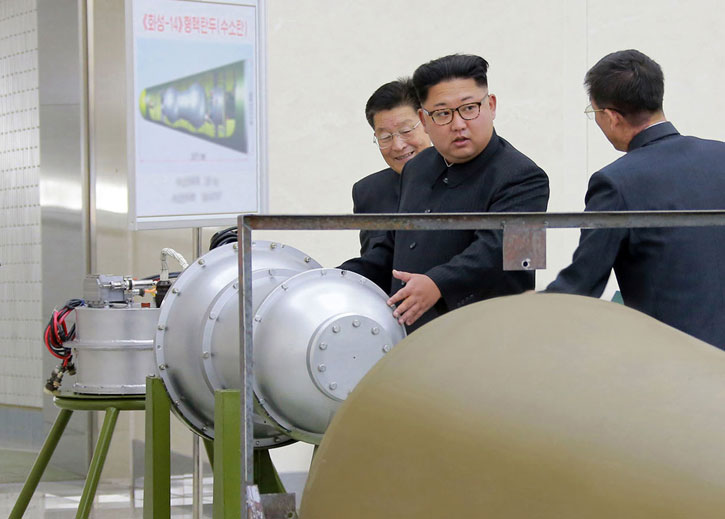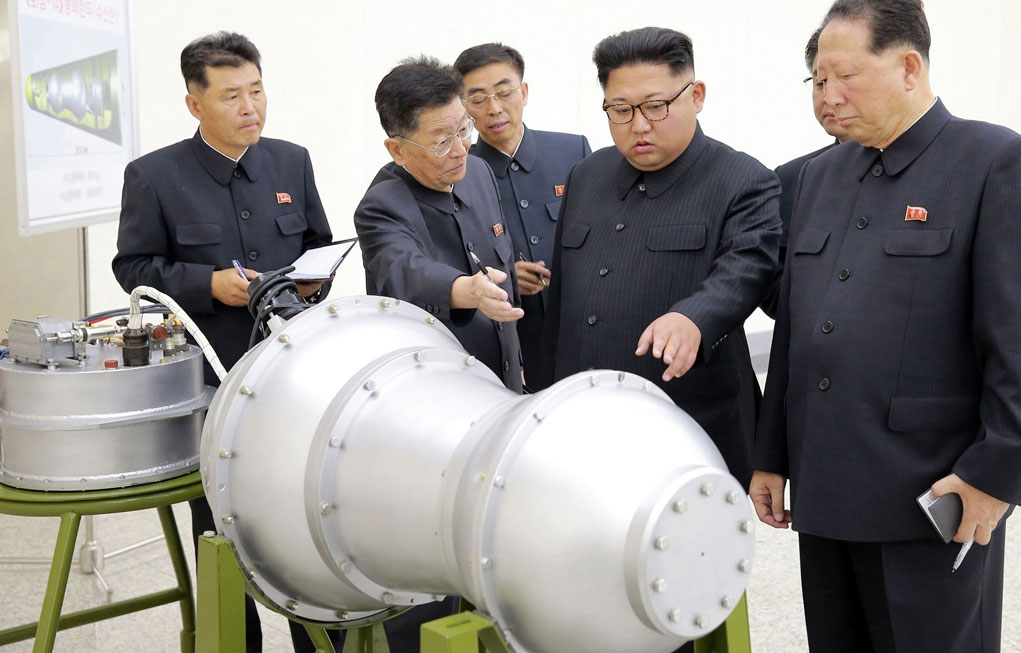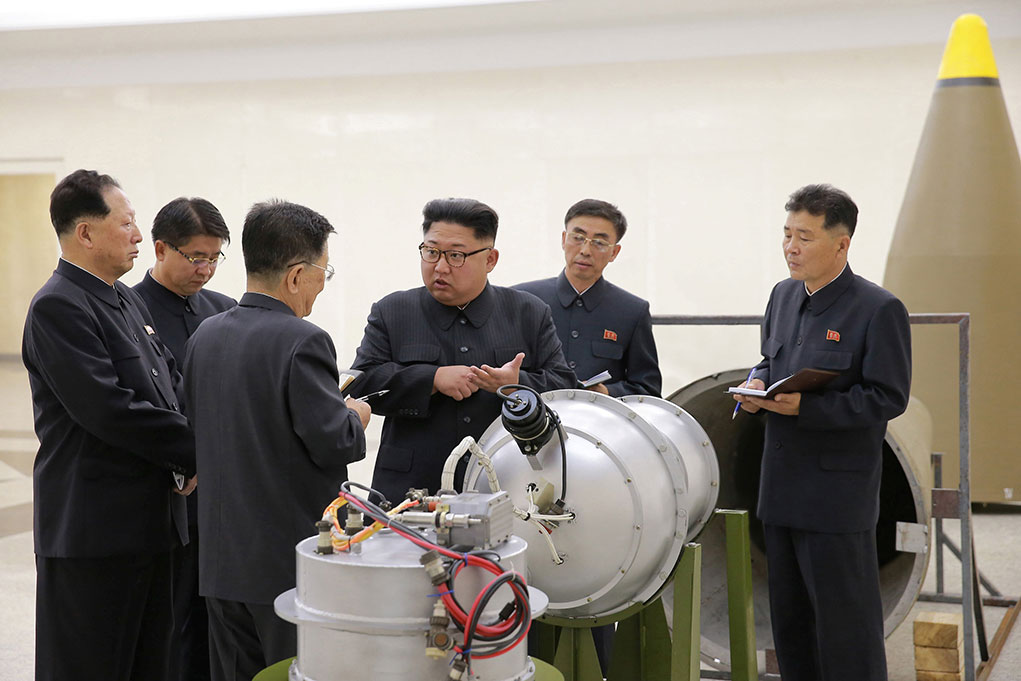Pyongyang confirmed today it successfully tested a hydrogen-bomb device. North Korea’s Korean Central News Agency (KCNA) earlier reported on a new miniaturized thermonuclear device developed by country’s Nuclear Weapons Institute. The shape of the instrument indicates the typical tandem design of a thermonuclear weapon, placed adjacent to an aerodynamic object likely to be the nose cone of Hwasong-14 ICBM, showing the new H-Bomb is sized to fit the country’s intercontinental ballistic missiles (ICBM).

A thermonuclear weapon represents the second generation nuclear weapon design using a secondary fusion stage in addition to the primary fission device. This secondary device is triggered by the fission stage causing a fusion reaction. Placed near each other in a radiation-reflecting package designed to contain x-rays for as long as possible , the fission bomb and fusion fuel make a powerful combination resulting in greatly increased explosive power, when compared to single-stage fission weapons.
A few hours later a massive seismic event of a 6.3 magnitude was recorded which was ten times stronger than previous nuclear tests that recorded a seismic event of 5.1 magnitude. The Korean Meteorological Administration reported an event likely an artificially triggered earthquake of 5.7 magnitude at a depth of 10 kilometers. The tremor was felt in China and was clearly detected on seismic sensors in South Korea, Japan and reported by the United States Geological Survey (USGS) earthquake monitoring service. A second quake on a scale of 4.6 was detected around the site, which could have caused as underground structures caved in after the first explosion.
The test occurred just under a year after North Korea’s fifth nuclear test on September 9, 2016 which North Korea claimed was its first hydrogen bomb test, and less than a week after a launch by North Korea of the Hwasong-12 ballistic missile over Japan and into the Pacific Ocean.
Analysts have been uncertain about the ability of Pyongyang to mount a warhead on a ballistic missile and get that warhead to survive the tremendous heat generated on the missile’s re-entry into the Earth’s atmosphere.
“Assuming Sunday’s test got what North Korean nuclear scientists set out to achieve, we can now expect a long-distance ICBM test in the short to medium term,” Chad O’Carroll, Managing Director the Korea Risk Group. “A successful full-distance range ICBM test into the Pacific Ocean would subsequently help North Korea show the U.S. that its long-range nuclear weapons capabilities are credible and ready for deployment,” O’Carroll noted.
North Korea has previously conducted nuclear tests in 2006, 2009, 2013, and two in 2016, with explosive yields of less than one kiloton, 2-4 kilotons, 6-9 kilotons, 7-10 kilotons, and 20-30 kilotons, respectively. Pyongyang claims it now masters the entire production process of nuclear devices, production of weapons-grade nuclear materials to the precision processing of components and their assembling, thus enabling the country an unlimited production of such weapons. This year North Korea also demonstrated the capability to build ICBMs able to carry such weapons over long distances.





















